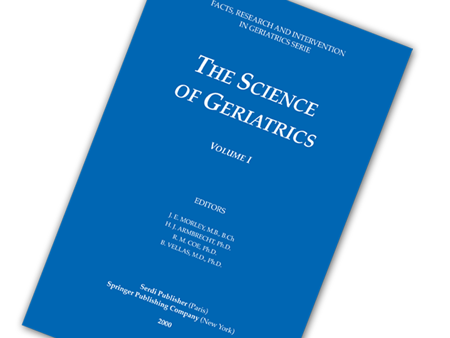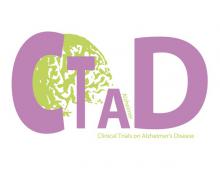The improved understanding of mechanisms underlying the development of AD, and thus the identification of new treatment targets, has largely been driven by genetic studies. One of the most influential scientists in this area is the third keynote speaker at CTAD, Professor John Hardy, PhD, of the Reta Lila Weston Institute of Neurological Studies, University College London. According to Professor Hardy, most genetic variants that contribute to the risk of AD have been captured, and they can be combined to create a polygenic risk score (PRS) that is significantly better than ApoE4 alone as a predictor of who will get disease. However, he said that genetics alone is insufficient. To identify presymptomatic candidates for prevention trials, he suggested combining PRS with other factors such as age and gender to identify who should be followed up with an amyloid scan or CSF amyloid study.
Genetics have also refined our thinking about the biological underpinnings of AD, suggesting that there is much more involved than amyloid and tau. For example, genetic studies indicate that the immune system and lipid metabolism, as well as other mechanisms, also contribute to the development of late onset AD. This means “we will probably need many treatment modalities at different stages of disease,” said Professor Hardy,
Progress on novel therapeutics
Data from studies of promising new therapeutics continued to emerge at CTAD on Friday and Saturday. Biogen’s Phillip von Rosenstiel. MD, presented new, 24-month data on the titration dosing regimen from PRIME – a Phase 1b study of aducanumab. Now in its fifth year, PRIME has produced rich data to better understand the safety, tolerability, pharmacokinetics, and pharmacodynamics of this promising monoclonal antibody, said Dr. von Rosenstiel. In addition, exploratory endpoints, including changes in amyloid PET and measures of cognitive and clinical decline have fueled optimism among clinicians, patients, caregivers, and of course, drug developers that an effective treatment may be within reach. As described by Dr. Samantha Budd-Haeberlein on Thursday, the original placebo-controlled trial was extended as an open-label extension (OLE) study to gather data over a longer duration and to test higher doses of the drug than those tested originally. Thus, in the OLE, participants in the lowest dose (1 mg/kg) and placebo groups were re-randomized to either
the 3 mg/kg dose or the titration regimen. The titration regimen gradually increased the dose from 1 mg/kg to a maximum of 10 mg/kg.
The 24-month data show a sustained, dose-dependent reduction in the amyloid PET signal. In participants who switched from placebo or 1 mg/kg to 10 mg/kg, the decline in amyloid PET signal accelerated, and a similar pattern was seen in the titration arm. Although most participants experienced some adverse events, safety and tolerability were judged acceptable, with the incidence of ARIA-E consistent with that seen in the placebo-controlled study. Most cases of ARIA-E occurred early in treatment and were asymptomatic. And while the study was not powered to detect significance in clinical and cognitive measures, the data indicate a slowing of cognitive and clinical decline, with the greatest benefits seen in the high-dose arms.
Biogen has now initiated a Phase 3 study of aducanumab, called EMERGE, which will include a titration regimen, said Dr. von Rosenstiel.
Mirjana Andjelkovic, PhD, of Roche, presented additional safety and tolerability data from the SCarlet RoAD open label extension (OLE) study of gantenerumab. In the OLE, the monoclonal antibody is given at higher doses than it was in the original SCarlet RoAD trial, which had been terminated early due to lack of efficacy. According to Dr. Andjelkovic, the general safety of the drug remains unchanged on high doses compared to low doses. By titrating the dose gradually, the risk of developing amyloid-related imaging abnormalities indicative of edema (ARIA-E) was reduced, she said, although many participants developed ARIA-H (the hemorrhagic form) as well. However, she said most of the ARIA events were asymptomatic and resolved as expected. Given other data presented earlier at CTAD, which showed that high-dose gantenerumab significantly reduces amyloid plaque burden, these safety data support testing this higher dose in a Phase 3 study with an optimal titration scheme, said Dr. Andjelkovic.
Treating Dementia Related Psychosis
While the search for therapeutics that could prevent AD or slow its progression have taken center stage throughout most of the CTAD conference, a symposium on Friday shifted attention to a recent trial of a drug to treat psychosis in AD. Neuropsychiatric symptoms including psychosis are among the most distressing aspects of AD for both patients and caregivers. Jeffrey Cummings, MD, ScD, Director of the Cleveland Clinic, Lou Ruvo Center for Brain Health noted that nearly all adults with dementia develop psychosis or agitation at some point, with the incidence becoming more frequent and persistent as the disease progresses. Moreover, neuropsychiatric symptoms are associated with many adverse outcomes including rapid cognitive decline, functional impairment, decline in quality of life, and increased mortality. These symptoms increase the likelihood of repeated hospitalization and nursing home admission, thus increasing the cost of care. With no approved drug to treat dementia-related psychosis (DRP), clinicians often prescribe atypical antipsychotics off label, although these drugs have limited efficacy and may cause with serious side effects. Thus, there is a clear need to develop better treatments.
Pimavanserin is a serotonergic drug that has been approved for the treatment of psychosis in Parkinson’s disease. It targets neurotransmitter receptors in brain regions affected by AD pathology, which are thought to be responsible for visual hallucinations, according to Stephen Stahl, MD, PhD, of the University of California, San Diego. Clive Ballard, MBChB, MRCPsych, from the University of Exeter Medical School, UK, said that in a Phase 2 trial conducted in persons with psychotic symptoms and possible or probable AD, pimavanserin showed a significant improvement in psychotic symptoms compared to placebo after 6 weeks of treatment. Individuals with more severe psychosis did particularly well, he said. The treatment was well tolerated, with no effect on cognitive function and no safety concerns, although some study participants lost weight. Dr. Ballard noted that at 12 weeks of treatment, there was no significant improvement in symptoms compared to the placebo group. The reasons for this will need to be explored in a longer and larger study, he said.
“This feels like potentially a very big step forward in treatment,” said Dr. Ballard. Pierre Tariot, MD, of the Banner Alzheimer’s Institute in Phoenix, Arizona, agreed that data from the study looked promising. Among people with severe psychosis, 96% benefited from the treatment compared to 53% who received placebo, which he called “pretty remarkable.” Given that currently available antipsychotics cause serious side effects, Dr. Tariot expressed hope that pimavanserin “can offer people help without harming them.”
Results from a trial of another serotonergic drug were more disappointing, however. Ilise Lombardo, MD, senior vice president of clinical research at Axovant Sciences presented results from a Phase 3 trial of Intepirdine – MINDSET — in participants with mild-to-moderate AD who were already being treated with the acetylcholinesterase inhibitor donepezil. Intepirdine and pimavanserin target different serotonin receptors. After 24 weeks of treatment, the drug showed no benefit on clinical or cognitive measures, said Dr. Lombardo. Axovant is currently evaluating a higher dose of the drug in a Phase 2b study, with results expected in early 2018, she said.
Progress in Prevention Trials
Dr. Tariot, in addition to his role as a geriatric psychiatrist at Banner, co-directs the Alzheimer’s Prevention Initiative (API), which is conducting three prevention trials that he described in a keynote address. The first study (API-ADAD) is being conducted in collaboration with Francisco Lopera, a clinical neurologist at the University of Antioquia, Columbia, who has been studying the largest known family affected by a genetic mutation that causes early-onset AD. To identify enough participants for the study, the investigators created the API Columbia Registry, which enrolled individuals whose families have been affected by the disease. The study, which will test an anti-amyloid drug called crenezumab, completed enrollment in 2017. Cognitively normal mutation carriers will be randomized to receive drug or placebo as a subcutaneous injection for five years, with the primary endpoint a slowing of cognitive decline. Dr. Tariot cited many takeaways from this study, particularly the need to work with health authorities, establish a registry for enrollment, adapt to changes in technology and community standards as the study proceeds, and consider cultural, ethnic, financial, and social barriers to participant in a clinical trial.
The second API study (Generation Study 1) will enroll participants who carry two ApoE4 alleles, which greatly increases their risk of developing late-onset AD; while a third study (Generation Study 2) will include individuals who have either one or two ApoE4 alleles plus a positive amyloid test if they have only one ApoE4 allele. Dr. Tariot noted that recruitment for these trials is especially challenging and will require a variety of approaches. One of these is the Alzheimer’s Prevention Registry, which allows people who are interested in learning more about AD clinical trials to sign up on the website endALZnow.org. The Banner Institute also launched another program, currently in the US only, called GeneMatch, where adults can provide a cheek swab for APOE genotyping. The results of the test are not disclosed, although the research team is studying issues related to risk disclosure. GeneMatch registrants are matched to clinical studies based on their location, interest, and genotype. Tariot said nearly 285,000 people have signed up on the registry, and nearly 45,000 on GeneMatch. “We are preparing for a world in which preventive treatments work, and millions of people want to learn their genetic information,” he said.
Other studies presented at CTAD also have implications for prevention trials and trials in early AD. Two of these studies reported on the use of plasma biomarkers to identify people in the early stages of disease. Virginia Pérez-Grijalba of Araclon Biotech presented data using the ABtest kit to assess the ratio in plasma of two amyloid peptide fragments — Aβ42 and A40 (TP42/40). The ratio of A42 and A40 in CSF is known to be altered in people with AD. The question is whether those same alterations can be detected in plasma. Dr. Pérez-Grijalba said that using the ABtest kit, researchers demonstrated significantly lower levels of TP42/40 in people with mild cognitive impairment (MCI), and even lower levels in people with AD; and they showed that TP42/40 levels correlated with AD biomarker profiles in CSF and with results of amyloid PET scans. These results demonstrate the utility of the test as a prescreening tool in AD clinical trials, said Dr. Pérez-Grijalba.
Randall Bateman, MD, of the Washington University School of Medicine in St. Louis, Missouri, described a different method to detect central nervous system amyloidosis in the plasma using a technique called stable isotope labeling kinetics (SILK), which assesses the production and clearance of A species in the blood using mass spectrometry. Earlier studies showed that the turnover kinetics of A species are altered in the presence of amyloidosis. The Zenith study that Dr. Bateman described identified a highly specific signature of A turnover kinetics that correlated with CSF and PET amyloid levels, and that was completely unaffected by time of day. They replicated this study in a blinded set of plasma samples that had been collected over several years using different collection protocols and subjected to repeated freeze-thaws; and subsequently in another validation cohort. Together, these data indicate that the test could be used to screen a population of cognitively normal individuals to identify who is at risk for AD for participation in clinical trials. The test could also be used clinically, said Dr. Bateman. “When effective drugs are found, we believe the demand for a test like this will be very high,” he said.
Thinking Outside the Box
The disappointing results of pharmaceutical trials has triggered interest in alternative treatment approaches, including one presented by Professor Jacques Touchon, MD, PhD, of the Montpellier School of Medicine. Professor Touchon has been working with a company called REGEnLIFE to apply a novel technology called photobiomodulation (PBM) to the treatment of AD. PBM delivers a combination of photonic (near-infrared light) and magnetic stimulation to promote healing in tissue, and has been used in animal studies to treat stroke and Parkinson’s disease. To explore its utility in AD, Professor Touchon and colleagues worked with a mouse model of AD in which AD pathology is induced by injection of an oligomeric A fragment into the brain. These mice show behavioral and cognitive changes that mimic those seen in AD, as well as cortical buildup of A42, oxidative stress, and neuroinflammation. Stimulation of both the head and abdomen of these mice with PBM reversed the performance deficits on tests of memory and reduced oxidative stress and neuroinflammation. The treatment also inhibited the cortical build of A42 and phosphorylated tau, the key components of plaques and tangles.
Professor Touchon and his REGEnLIFE colleague Guillaume Blivet said the mechanisms underlying this dramatic reversal of pathology are unclear. “When I first saw the results, I was shocked,” said Professor Touchon. Particularly perplexing is why stimulation must be delivered to both the head and abdomen – delivery to either location alone had no effect. Blivet suggested that there may be two mechanisms at work in the gut and the brain. They plan to continue to study mechanisms as well as test the technology in other neurological disease models before moving to human studies, said Professor Touchon



